










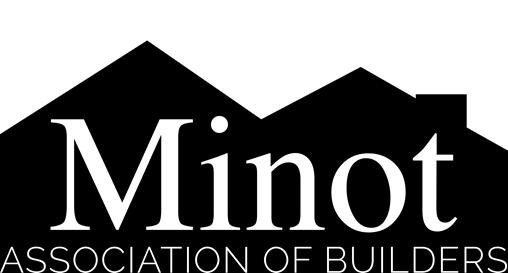








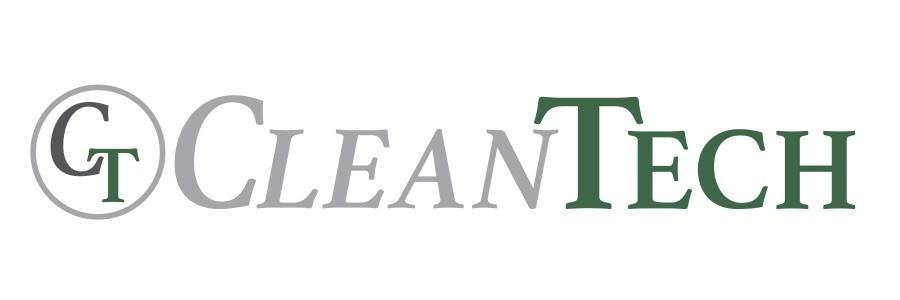


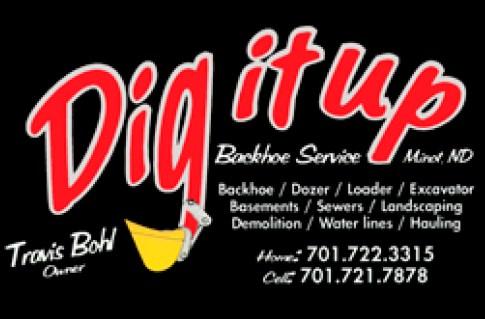
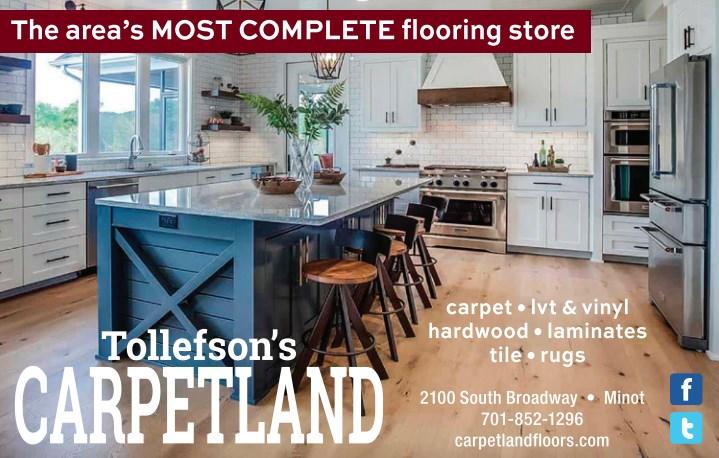


















TRAVIS MOWBRAY- PRESIDENT
Mowbray & Son Plumbing & Heating
CASEY SCHRIOCK - VICE PRESIDENT
Concrete Mobile
CHRIS DAHL United Rentals
ROB ORTS
Verendrye Electric
PHIL RISBRUDT K & R Contracting
BRUCE WALKER- SENIORLIFE DIRECTOR Coldwell Banker
JOE STENVOLD - LIFE DIRECTOR JAX Contracting
LAURI HOPWOOD - TREASURER Dacotah Bank
SHANE LIDER - IMM.PASTPRES. Minot Lumber
PAT BAILEY Muus Lumber & Hardware
KASPER ZIEGLER Burdick Job Corps
COURTNEY PARDON Bremer Bank
CURT OLSON MDU
JEFF HAIDER WB Components
EXECUTIVE/STRATEGIC VISIONING
Travis Mowbray, Casey Schriock, Lauri Hopwood, Shane Lider, Bruce Walker
HOME & GARDEN SHOW
Kasper Ziegler (Chair)
Morgan Abel, Shane Lider, Lauri Hopwood, Jeff Haider
MEMBERSHIP
Rob Orts (Chair)
Chris Dahl, Pat Bailey, Joe Stenvold, Amber Kraft
PARADE OF HOMES
Mataya Lafontaine, Kimberly Keller, Renata Buen, Pat Bailey, Ashley Lawson, Alyx Pederson, Courtney Pardon, Jeff Haider
Rob Orts, Phil Risbrudt, Chris Dahl, Kasper Ziegler, Courtney Pardon, Desiree Burleson





40 BELOW COUNCIL
Amanda Geinert, (Chair) Casey Erickson, Jessi Erdmann, Cole Stober, Ron Rudser, Gene Beau Lac, Morgan Langan, Mataya Lafontaine, Marie Hallof, Ashley Lawson, Cody Hodenfield, Shane Lider, Phil Risbrudt, Alissa Ewan, Amber Kraft, Taylor Feller, Britain Zellers



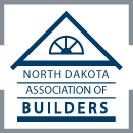



TRAVIS MOWBRAY
2022 MAB PRESIDENT
Minot Association of Builders Members,
As your 2022 MAB president, I’d like to thank you for your commitment to our goals and the growing needs of Minot and the surrounding area. It’s exciting to be part of an organization that has a direct impact in supporting our building trades industries, and look forward to the upcoming year as our local President. The MAB will continue to promote our mission and the education and awareness of the building trades to our area youth, exemplifying the many benefits and opportunities the building trades have to offer. Additionally, I would like to thank Shane Lider for leading our association this past year and helping lead us through yet another year of dealing with COVID and related industry struggles it has put on us all.
I have been a part of the board for Minot Association of Builders since 2019. I graduated from NDSU with a degree in mechanical engineering and work as a 4th generation plumber, pipefitter, and business owner in our community. My wife, Jessica, is a substitute teacher for

ERIKA KELLY MAB EXECUTIVE OFFICER
Thank you for a great year in 2021! I’m looking forward to a great year in 2022, starting with...the Home & Garden Show!
I am working alongside the Home & Garden Show Committee to keep the show fun and exciting for attendees & exhibitors alike. We like to strike a balance between keeping things as expected, but also bringing in some new features. This year, a few new things you can see at the show: The Magic City Discovery Center Kidzone, Painting Casas on Canvas with Ackerman-Estvold, a more robust prize to encourage attendees to “Hunt for Homer Raffle to round out the show.
Keep your eyes out for other programming this winter & spring, including many Lunch & Learn opportunities, a City Leader’s Luncheon, Candidate Forum before the June elections, and some Builders After Hours too!
Wishingyouwell, Erika
Minot Public Schools. Our daughter, Darby, is an eighth grader at Jim Hill and our son, Carter, is a senior at Minot High and is looking forward to pursuing a degree in engineering next fall. As a family, we are committed to bettering the future of our community.
For MAB, it has been a great fall and winter. We had a terrific turnout at the Bags and Builders event in October, hosted by 40 Below. Likewise, the Builders Bash was a huge success this December and was enjoyed by many. Congratulations to the award winners and those who were recognized at the event, and thank you again to Gravel Products and Concrete Mobile for hosting.
As we look forward to 2022, our next big event is the Home and Garden Show. We look forward to promoting businesses in Minot and the surrounding area, kicking off another busy construction season.
Sincerely,
TravisMowbray
As we head back into Home & Garden Show season, I would like to reflect and remember a dear committee member who is no longer with us.
In 2021, we lost Loren Vannett. Loren was a longtime employee of Muus Lumber & Hardware and was an active member of the Home & Garden Show Committee for many years.

We will miss Loren’s contributions to the show, the hours he volunteered and his calm nature & warm smile. Our hearts go out to s family & friends.


We would like to extend a big THANKYOU to our members who are up for renewal this quarter. We have loved working with you over the past year and look forward to many years moving forward!!
Your continued support of the Minot Association of Builders helps us continue to work for you at a local, state and national level.
A-1 Evans
Septic Tank Service | Cole Ritter
Amanda Geinert | FIBT (Affiliate)
Bremer Bank | Jason Bentley
Century 21 Action Realtors | Lisa Olson
Connole & Somerville | Julie Drady
First International Bank & Trust | Dave Pankow
Hight Construction | Jay Hight
Ackerman Surveying & Associates | Rollan Ackerman
American Family Insurance | Mike Lucy
Burdick Job Corps | Kasper Ziegler
C'est Bon Construction, Inc. | Charles Bon
Ackerman-Estvold | Sabrina Herrmann
All-State Contracting | Warren Anderson
Brokers 12 | DeLynn Weishaar
CAVES | Ron Stotz
Culligan | Ed Nush
Houston Engineering | Dave Schwengler
Integrity Outdoor Living | Dustin Mayer
Ivers Plumbing | Nathan Iverson
Jessi Erdmann | FIBT (Affiliate)
Jill Lohnes | FIBT (Affiliate)
Landsiedel's Heating & AC | Larry Landsiedel
Minot Builders Supply | Tom Philion
The Title Team | Paula Bachmeier
Gravel Products | Hallie Lock
Heartland Home Supply | Ryan Schaan
Pella Windows & Doors | Joel Malingen
Wold Engineering | Kent Indvik
Dig It Up Backhoe Service | Travis Bohl
Farmers Insurance | Miranda Schuler
Ferguson Enterprises, Inc. | Khris Walz
Magic City Home Leisure | Brandon Solem
TJ Appliance Service | Jessica Jensen
Tollefson's Retail Group Inc. | Brandon Tollefson
Do you see your name here?? Don’t forget to renew your membership to get access to all the latest info, events, and exclusive sponsorship opportunities for your event. It is so easy to renew online just visit www.minotab.com.
Prefer to receive an invoice and mail a check for your renewal? No Problem!
Just email Erika at contact@minotab.comfor more information.


SEE YOUR AD HERE!


Oct 2021 - Jan 2022
Joining the Minot Association of Builders is the first step to becoming more active in our industry. Please take a moment to welcome the newest members of our association.



CALL THE MAB OFFICE TO FIND OUT MORE. 852 0496



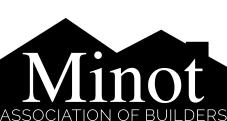


LMS ELECTRIC ASSOCIATEMEMBERSHIP







Thankstothesemembers whohavehelpedgrowour MABcommunitybyrecruiting newcompaniestojoinour association. Ifyouhavea memberprospect,please contactErikaKelly (contact@minotab.comor 852-0496)andshe’lltakeit fromthere!
STATESMEN: (500-999 Credits)
John Coughlin (512)
SUPER SPIKES: (250-499 Credits)
Bruce Walker (397.5)
Joe Stenvold (327.5)
ROYAL SPIKES: (150-249 Credits)
RED SPIKES: (100-149 Credits)
Greg Aasmundstad (133)
Rob Orts (116.5)
GREEN SPIKES: (50-99 Credits)
Dave Lebrun (81)
John Lund (72.5)
Joni Hoffer (68)
Cindy Snay (64.5)
Karen Engle (55)
LIFE SPIKES: (25-49 Credits)
Joe Kraft (40)
BLUE SPIKES: (6-24 Credits)
Pat Bailey (23)
Christopher Dahl (12)
Stacey Abel (9.5)
Erika Kelly (8.5)
Todd VanDusen (7.5)
Phil Risbrudt (6)
CANDIDATES: (1-5 Credits)
Wendy Bailey (2)
Pat Graner (2)
Khris Walz (2)
Jeff Haider (1)
Hallie Lock (1)
Travis Mowbray (1)
Tom Philion (1)
Aisha Vadell (1)
Amanda Geinert (0.5)
Penny Perdue (0.5)
John Zimmerman (0.5)
Shaun Aho | 701-805-0877 lmselectricnd@gmail.com www.lmselectricllc.com
PIONEER
ASSOCIATEMEMBERSHIP
Rachel Coblentz | 701-525-6745 pioneermetalsales@gmail.com www.pioneermetalsales.com
BORDER STATES ELECTRIC ASSOCIATEMEMBERSHIP
Tyler Bitz | 701-420-5226 tbitz@borderstates.com www.borderstates.com
DAN YALE



MINOT BUILDERS SUPPLY AFFILIATEMEMBERSHIP dyale@minotbuilderssupply.com
BRITAIN ZELLERS THE TITLE TEAM AFFILIATEMEMBERSHIP britain@thetitleteam.com
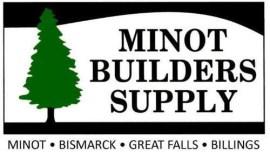

Thanks to these members who have help grow our Minot Association of Builders community by recruiting new companies to join our association this quarter
Contact the MAB office at contact@minotab.com or 701852-0496 so we can help you distribute membership information, benefits, and an application
Writtenby:PamStroklund|Career&TechnicalEducationDirector,MinotPublicSchools
In October 2018, the ND Workforce Development Council reported North Dakota had a shortage of workers prepared to fill technical or “middle-skill” jobs requiring beyond high school but not a four-year degree. Business, industry, and the economy all depend on high-quality career and technical education to sufficiently train workers to fill these jobs.
As a result, during the 66th ND Legislative Assembly, Governor Burgum included $30 million in competitive grants in his budget for career academies to help move youth into the workforce and lower the cost of college. Dr. Mark Vollmer, Minot Public School Superintendent, and I along with representatives from the City of Minot testified in support of the funding which unfortunately, was removed.
By August 2021, the Online Job Openings Report published by Job Service ND reported North Dakota had 17,519 open jobs. Approximately 65% of those jobs require an associate degree or less. A new bill, HB1015, was introduced in the 67th ND Legislative Assembly proposing $50 million to increase access to Career and Technical Education (CTE) opportunities by building new or expanding existing Career and Technical Education Centers and facilities.
The Minot area is no exception when it comes to a shortage of trained workers. Coordinating efforts to provide short-term CTE training to fill our job openings is necessary. With that in mind, Dr. Vollmer, Jennifer Kraft, Adult Learning Center Director, and I looked at how we could provide skills training and meet workforce needs collaborating with all the educational partners in our community for the purpose of: TRAINING LOCAL TO RETAIN LOCAL
Working together, the partnership was designed to:
Advance career and technical education throughout the Minot and the surrounding area,
Provide quick re-tooling of unemployed workers and those recovering from addiction, Provide opportunities for advancement of education,
including GED services, certification programs, and access to associate, undergraduate and graduate programs,
Improve access of existing facilities to be used by local businesses for training,
Remove barriers to employment, and
Meet the workforce needs of our community.
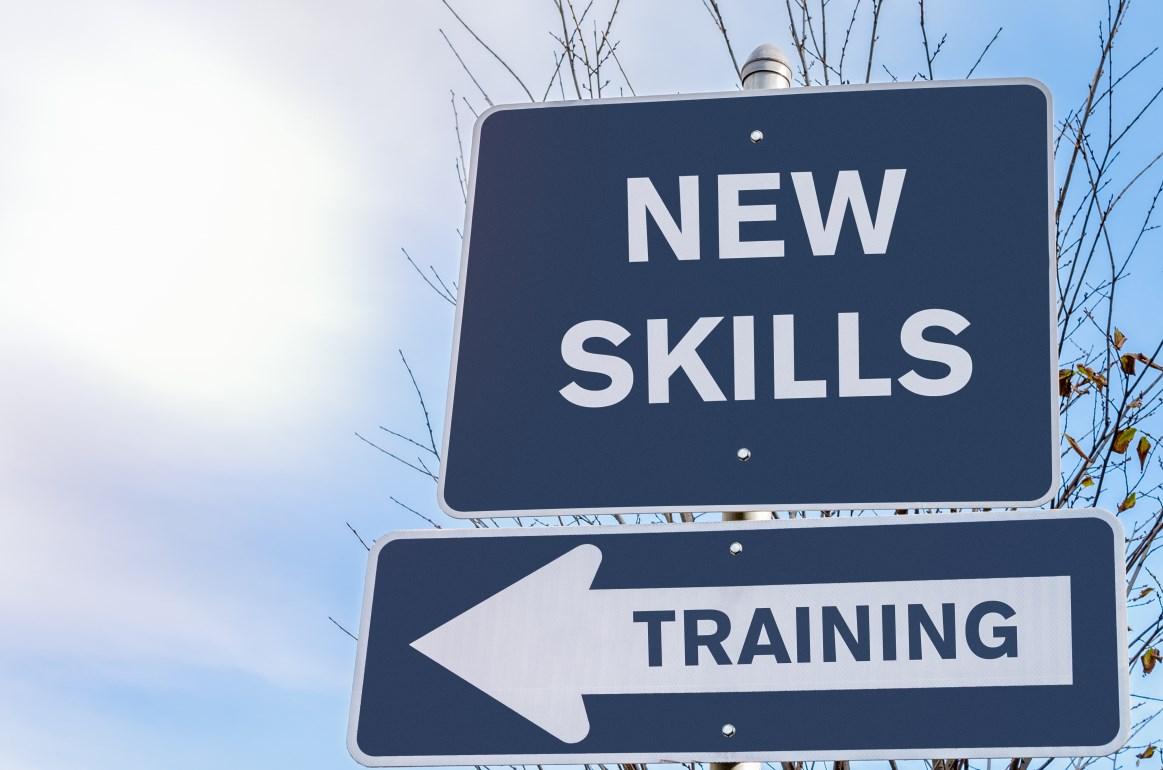
Dr. Vollmer and I returned to the legislative proceedings with a draft proposal to testify once again in support of the proposed $50 million. To our surprise, the proposed $50 million was shifted to the ND Career & Technical Education budget and increased to $70 million to be funded by Federal Coronavirus Capital Project dollars.
With funding secured and grant applications being accepted, Minot Public Schools gathered a steering committee of workforce and educational partners, held conversations with area schools, reviewed local, regional, and state workforce data, conducted stakeholder surveys, and identified skills training we could provide to Minot area students and the community.

Local CTE programs are well positioned to equip students and adults with the educational opportunities and work-based learning they will need for career success. CTE Capital Projects funding is being requested to update and advance the programming and open more emerging opportunities. Dollars will be used for retrofitting and expanding existing facilities, purchasing current/emerging technology and entrepreneurial equipment, and partnering with business/industry to make available more apprenticeships and short-term on-the-job training.
In 2020, the Minot Public School District was gifted the Cognizant building for $10, providing millions in savings toward a second high school. A bonus property adjacent to the Cognizant building, the Voya building, was included in this purchase. This 7500 sq. ft facility is a prime location to transform into the Minot Area Workforce Academy to use for expansion of work-based learning coordination, career awareness, community partnerships, and skills training not presently offered in the Minot area.
The Capital Projects proposed by Minot Public Schools in the grant application are designed to address a critical need of the community to be served by it. The Minot Area Workforce Academy will house an Early Childhood Learning Lab, a Commercial Driver’s License simulation lab, a Skills Training/Multipurpose Room, and work-based learning coordination.
The Early Childhood Learning Lab, in partnership with Head Start, will provide needed preschool for lower income families, and educate future childcare providers to fill workforce shortages.
The CDL training program, in partnership with Quentin Burdick Job Corps, Minot Public Schools, and the community, will address the additional training requirements and critical need for bus drivers and transportation workers.
The Skills Training/Multipurpose facility provides a community hub for career readiness and exploration along with short-term skills training for present and future
workforce shortages.
Increased work-based learning opportunities (i.e. trade/ industry bootcamps, job shadows, internships) will assist in connecting potential employees to employers with indemand occupations.
Adding a New High School (9-12th grades) and reconfiguring Magic City Campus to a 9-12th grade high school provides more training facilities and CTE opportunities for area students and the community in the areas of diesel technicians, building trades, manufacturing/welding, cooks/chefs, and health sciences. Emerging technology added to the Health Sciences will train students and workforce partners on the effects of COVID. Entrepreneurship will be encouraged through a food truck used by several CTE programs and a new Small Business Management certificate of completion opportunity.
During the 67th ND Legislative Assembly Special Session held in October, HB1505 added $20 million of America Recovery Plan Act funding to the CTE Capital Projects Funding.
In January, the ND State Board for Career and Technical Education awarded the Minot Area Workforce Academy capital project, submitted by Minot Public Schools, $6,666,666 from the Career and Technical Education Capital Projects Fund Grant. The source of these funds is the $20M added by the special legislative session. The grant requires a dollar-for-dollar local match and considered one-time funding.
The ND CTE Board initially approved projects utilizing the ARPA funds and is now in the process of reviewing applications to allocate the remaining $68M Coronavirus Capital Project Fund dollars. Minot Public Schools was not 100% funded and is eligible for full funding through continued review. This would add an additional $3.3M. Notification of Coronavirus Capital Project funds is expected by the end of February.
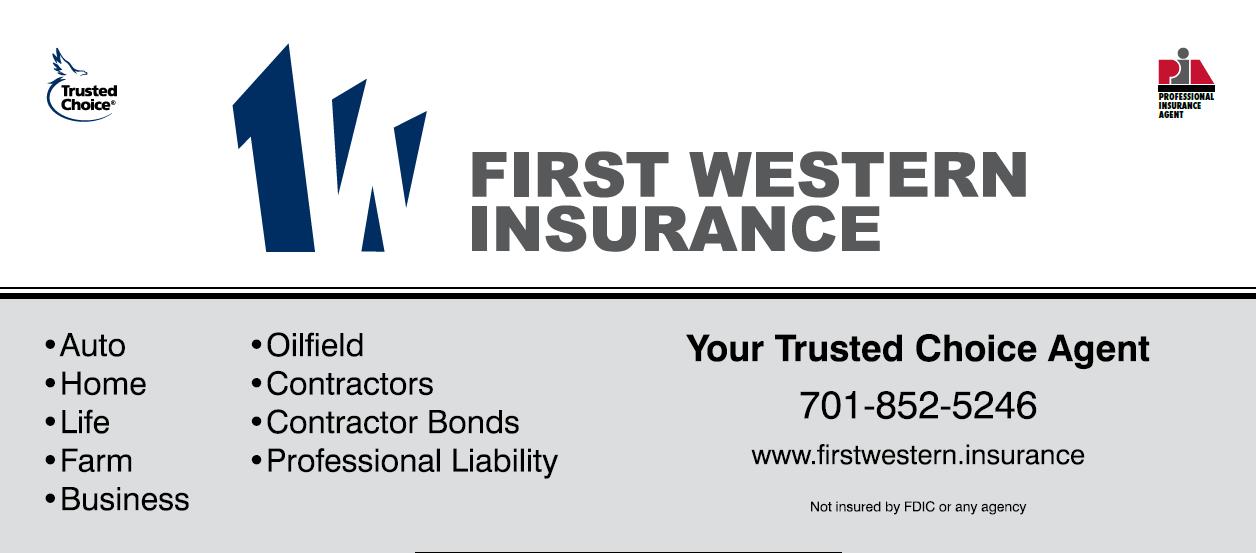


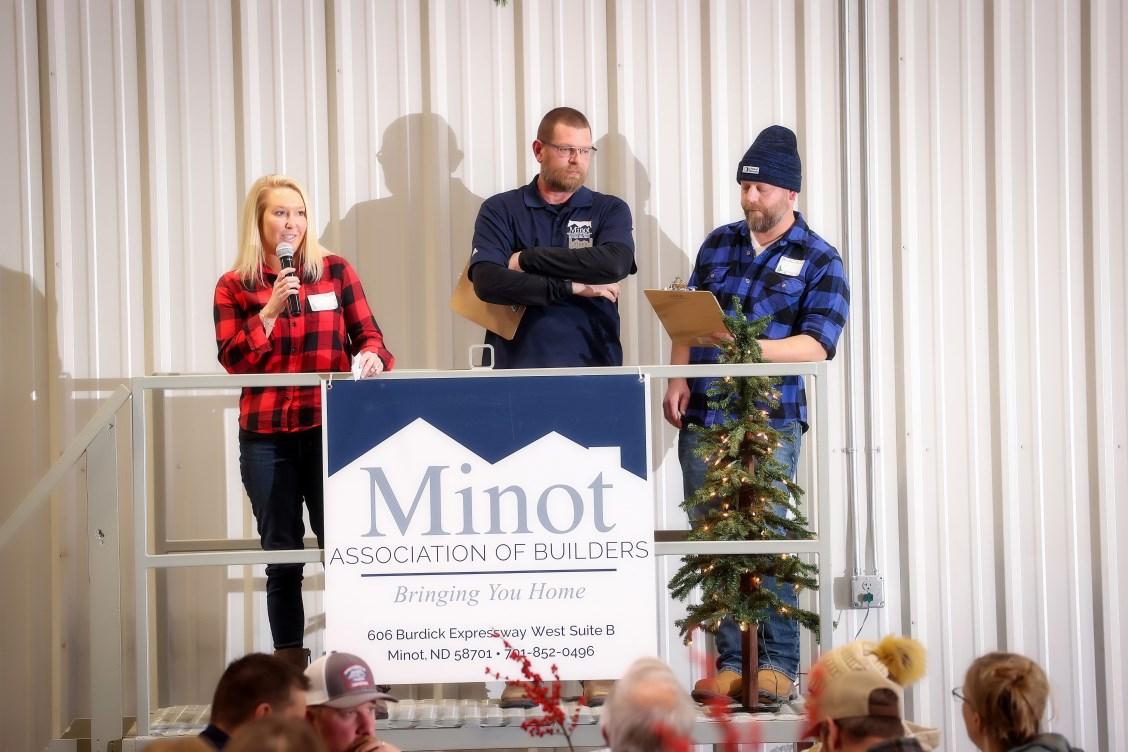



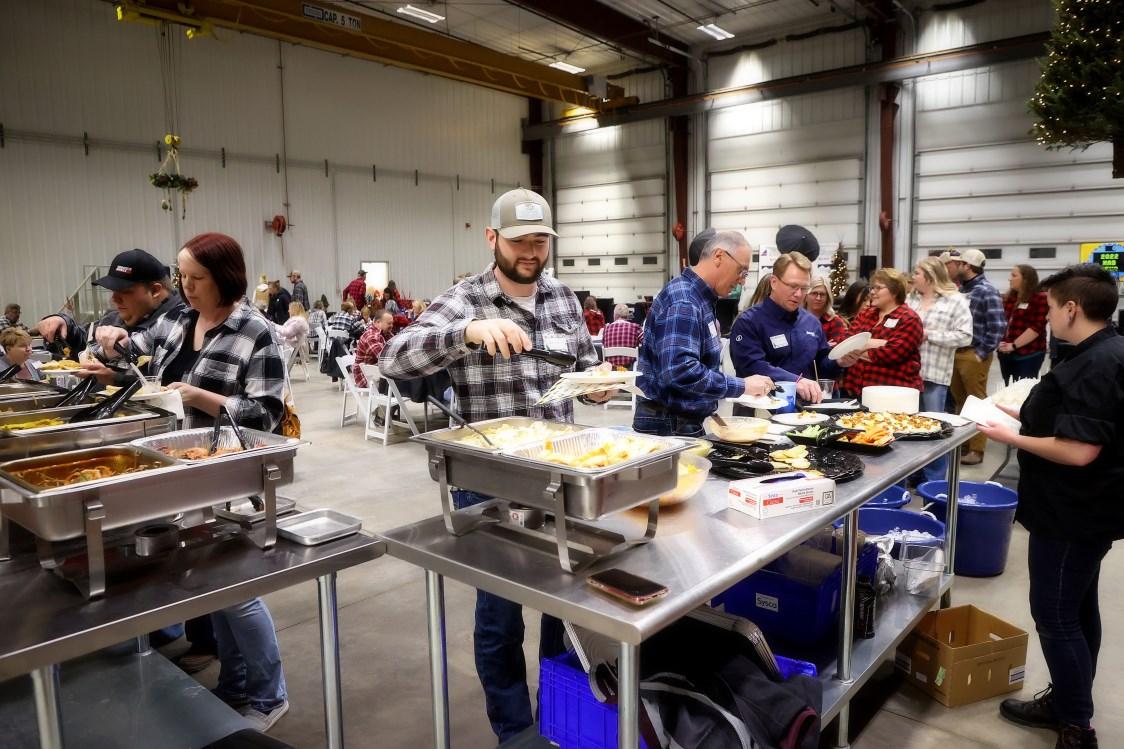







The MAB Builders Bash was held in December, and the annual event was as fun as ever! After taking a hiatus in 2020, all members were excited to gather together again to celebrate a great year and kick of the holiday season. Thank you once again to Gravel Products & Concrete Mobile for opening up their shop so we could bring in our crew and celebrate! Also note the Christmas tree suspended from the pump truck truly so creative and fun to see!
We began the evening with a social hour, followed by Builder Bingo and then the program in which we summarized a great year at the MAB, installed the 2022 Board of Directors, and also got to honor the winners of the MAB Excellence Awards. In addition to all the fun, we played a fun game of “hard hats and hammers” which raises money for the annual Dana Ebel Memorial Scholarship. After the program commenced, Hammerschlagen for PAC was a popular game, and as always, Family Feud & Name That Tune by Encore Events kept us all laughing!
We brought in many vendors to help the night run smoothly, and had support from sponsors such as: First International Bank & Trust, The Title Team, Town & Country Credit Union, Souris Valley Ready Mix, Dacotah Bank, Gate City Bank, & Craft Builders. THANK YOU TO ALL WHO ATTENDED AND SUPPORT THE MAB ALL YEAR LONG!
Award Winners pictured below, from Left to Right: Phil Risbrudt is honored by NDAB CEO Kayla Pullvermacher for his year as the 2021 NDAB President, Marie Hallof of Ward Title was awarded Associate of the Year, Wayne Bontrager of Flying B Construction was awarded Builder of the Year, Paula Bachmeier of The Title Team was awarded Citizen of the Year, and Shane Lider of Minot Lumber was honored as the Dan Feist Extra Mile Award Winner, as well as an award to thank him for his year as the 2021 MAB President. Congratulations to all our award winners!





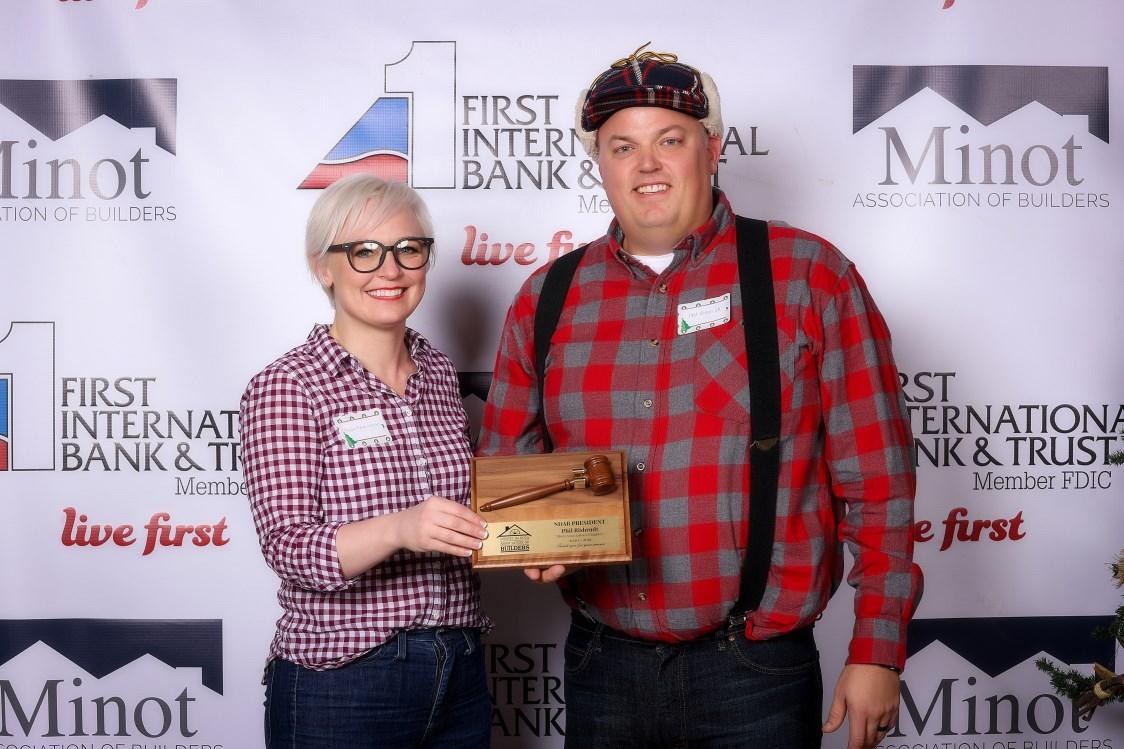

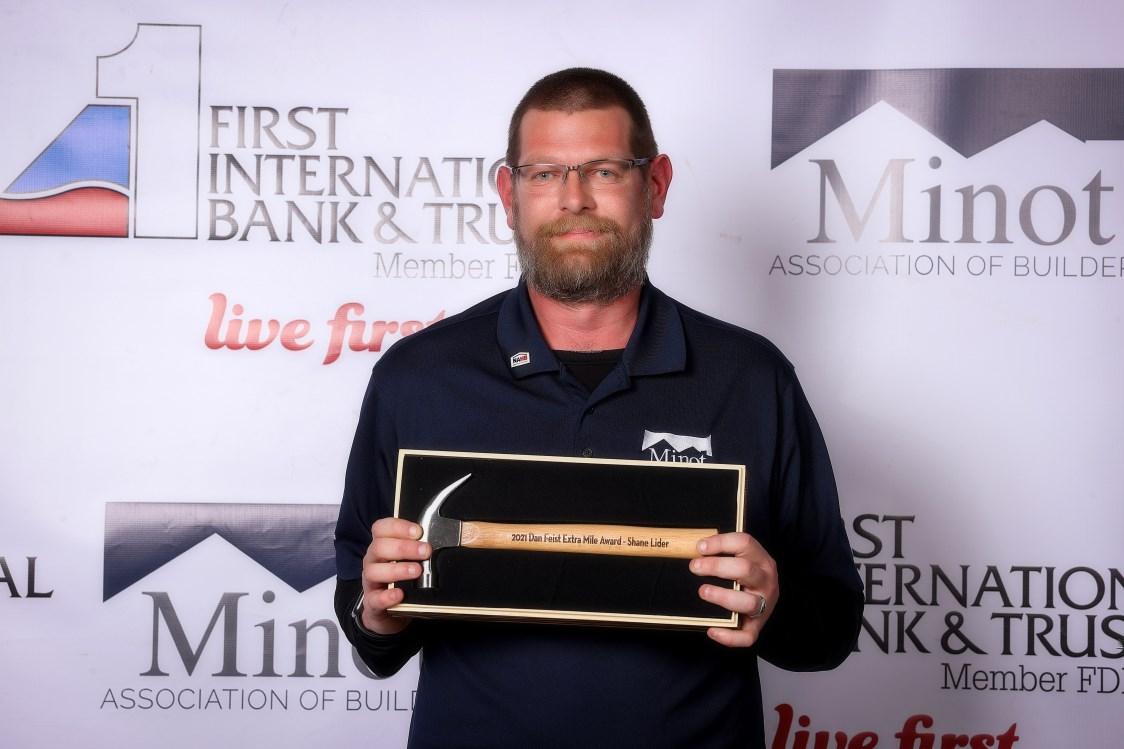




$246,870,839.00

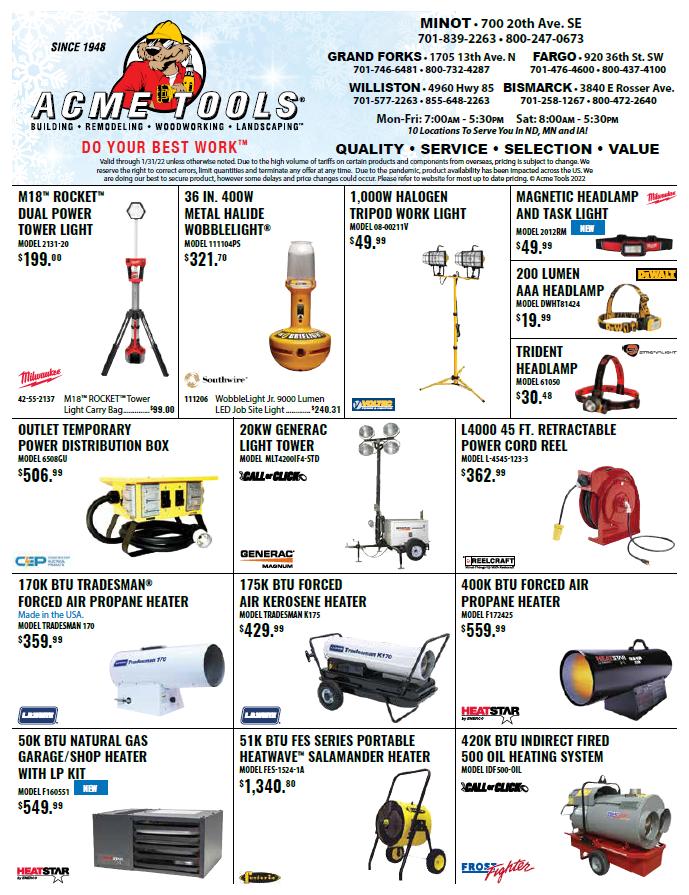
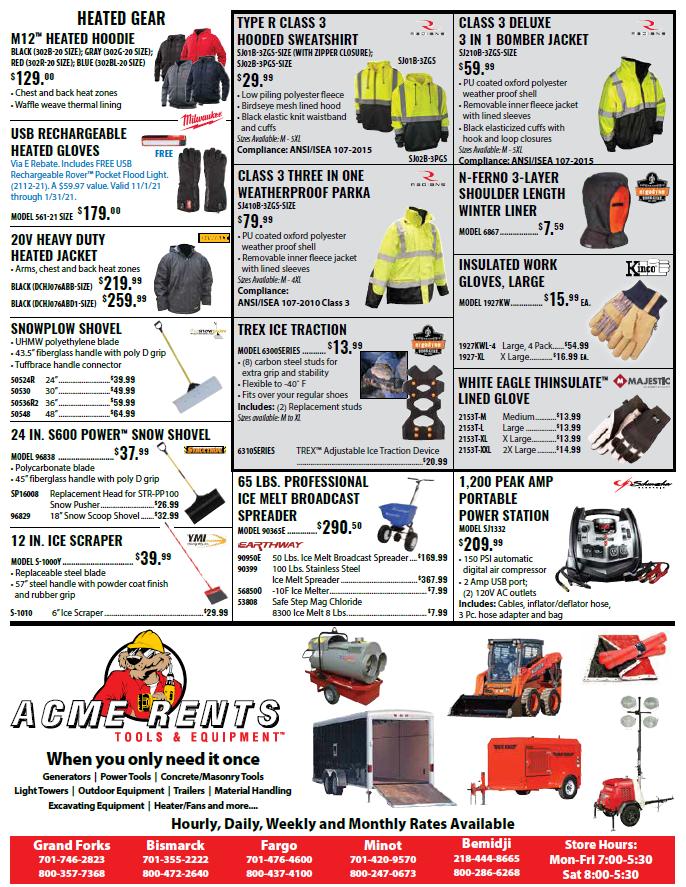












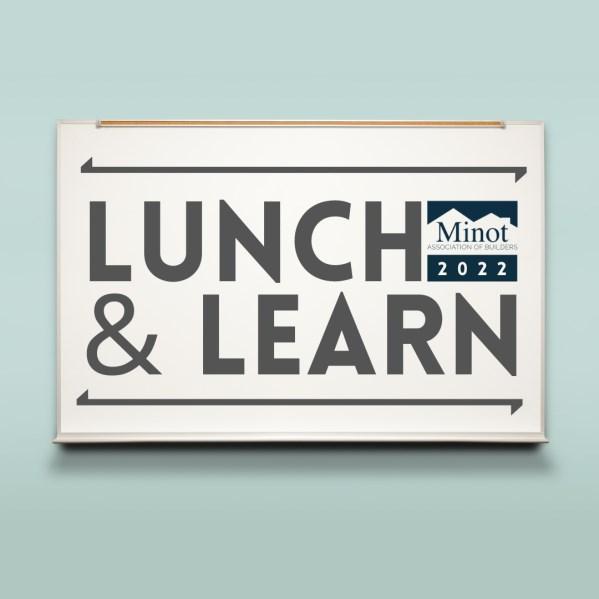










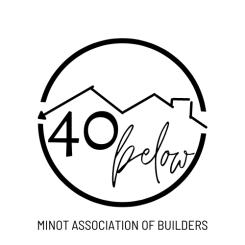

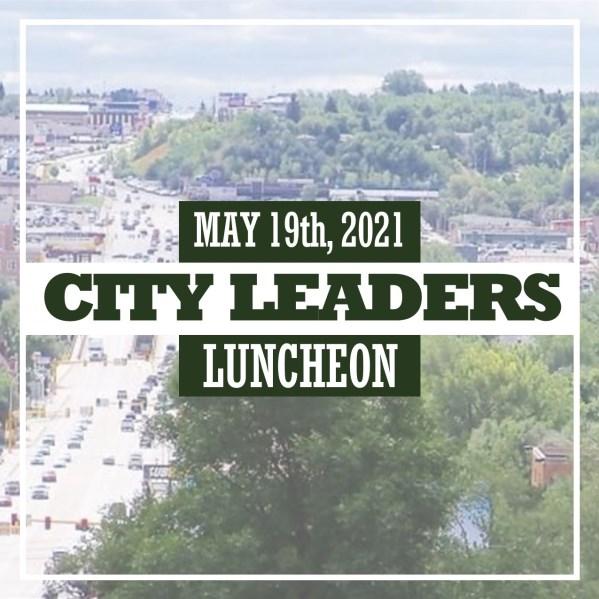

20-21
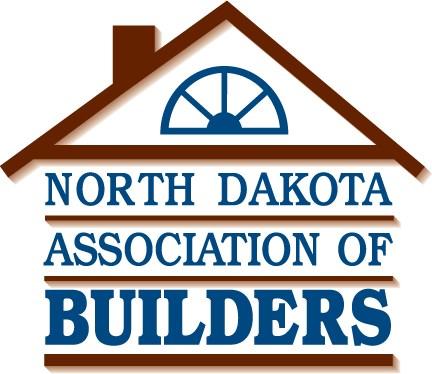



Outdoor living has been propelled to the top of home owner wish lists and, subsequently, has become a top priority for architects and design professionals focused on residential design.
Connection to the outdoors/nature and outdoor entertaining both ranked high on the top 10 list of design drivers in “The Future of Home Design,” a recent survey conducted by the New Home Trends Institute (NHTI) in collaboration with ProBuilder.
More than 300 residential architects, designers and designminded builders across the country responded to the survey with their opinions, experiences, and predictions about trends in new-home design, including styles, materials and more. The results offer insight into trends we can expect to see in home design during the next three to five years.
Of those surveyed, 58% said connection to the outdoors/ nature will be an important influence on their design choices in the coming years, while 45% said outdoor entertaining will also receive increased attention. Following value and cost considerations, connection to the outdoors and nature was predicted to be the largest driver of home design choices over the next three years.
A large, green backyard once satisfied home buyers, but today’s buyer is seeking more options and flexibility in how they use outdoor spaces just as they are for interiors. In fact, “The Future of Home Design” survey reveals that an open yard ranks low among design professionals, compared with more multifunctional options. Just 28% of respondents chose that type of space in the survey, compared with other more popular features, such as covered outdoor rooms/ open-air rooms (73%), patios (68%) and decks (55%).
Designing higher-density projects as demand for multifunctional outdoor spaces increases requires creative solutions. Popular solutions include:
Expansive windows and floor-to-ceiling sliding glass doors help create connection to the outdoors without requiring additional square footage indoors or out.
Expect efficiently designed outdoor spaces featuring more built-in features, such as firepits or fireplaces (73%), outdoor kitchens (68%), gazebos or pergolas (44%), pools (36%), integral package delivery solutions (22%), and spas or hot tubs (20%) often several in the same footprint or across multiple (if smaller) outdoor living spaces serving the home.
Covered outdoor rooms address the space allocation debate and also meet the need and desire for privacy. Often set up to mirror the comfort (and sometimes even the finishes) of the home’s interior, these spaces are an indooroutdoor hybrid.
In the push-pull of dwindling lot sizes and greater outdoor living functionality, privacy and community remain strong considerations among consumers, and roof decks are emerging as an ideal solution. “The Future of Home Design” survey found that about 38% of architectural designers included roof decks in their designs more in 2020 than in 2019.
Meanwhile, the front porch also a more common design feature for 53% of architectural designers in 2020 than in 2019 is often used to promote community connection.
One thing is certain: The future of outdoor living will look different from traditional backyards as more external challenges arise, but the importance of connecting to the outdoors remains a top design consideration for designers and consumers alike.
Source:ProBuildermagazine






pushed mortgage rates over 18 percent.
On March 10, 1980, Gov. Art Link established a special task force to explore financing that would make housing more affordable in North Dakota. The task force brought forth an initiated measure that would allow the state to offer tax-exempt financing. On Nov. 4, 1980, the concept was put in the hands of the people. North Dakotans voted yes, spurring the creation of a housing finance agency.
Initially Bank of North Dakota was charged with acting as the state’s housing finance agency. Finally, on Feb. 4, 1982, North Dakota Housing Finance Agency (NDHFA) became a standalone state agency. Later that summer, NDHFA executed its first single and multifamily housing bond purchase contracts.
Over the past four decades, more than 47,000 individuals and families have benefited from the tax-exempt financing that was approved by North Dakota voters and still offered by NDHFA today. Most of those households are first-time homebuyers.
ThechartbelowillustratestheuseofNDHFA’sFirstHomeprogram.Sincethefirst loanswerepurchased,interestrateshavedroppeddramaticallyandthenumberof peoplelivinginthehomeatthetimeofthepurchasehastrendeddownwardaswell. Mostinterestingisthatwhilethesizeofthehomehasonlyincreased6percent,averagehouseholdincomeisup163percentandthepurchasepriceofthehomeisup263percent.

Today, more than 75 percent of NDHFA’s borrowers receive purchase assistance – first-time buyers, special needs households, and households who just need help to buy again. Receiving down payment and closing cost assistance helps buyers achieve homeownership sooner and it frees up their available funds for necessities like home improvements and the purchase of their first lawn mower.One of the greatest hurdles first-time homebuyers face is covering down payment and loan closing costs. Through a grant from the Federal Home Loan Bank, NDHFA first offered purchase assistance to lowerincome borrowers in 1990. The homeownership division began offering down payment and closing cost assistance to all the agency’s first-time homebuyers in 1997.
To ensure the best customer service possible, NDHFA began servicing its own loans in 1991. The majority of the more than 11,000 loans in NDHFA’s portfolio today are its own. The agency also services loans for the Bank of North Dakota and for local nonprofit housing providers, helping the latter increase their lending capacity. Keeping NDHFA’s servicing local makes life easier and contributes to the success of the agency’s homeowners.
While I only focused on the agency’s first-time homebuyers program, I encourage you to visit our history webpage www.ndhfa.org/index.php/history/ to see how the agency has been actively involved in all aspect of affordable housing.
Finally, I want to thank all our housing partners who have evolved and grown with us to shape the many programs that help to ensure the availability of affordable housing for every North Dakotan. Dave Flohr, NDHFAExecutiveDirector

I’ve attended many conferences and conventions throughout my career and years as a member organization volunteer myself. Some big, some small; some well-organized and some a circus. Sometimes you leave these events asking yourself, “what the heck was that?” and “was that worth my time?”
Members that have yet to engage in National Association of Homebuilders (NAHB) work should be confident that their time would be well spent at the International Builders Show. For those who are unfamiliar, this event combines both a high-level expo with product launches and displays, educational sessions, and homebuilder trends, with NAHB committee sessions, member education, and business meetings. It’s a great way to help support and shape the housing industry across the united states. This year alone, IBS welcomed more than 70,000 industry professionals. Over 50% of those participating were firsttime attendees.
The trade show exhibit hall included more than 800 exhibitors and gave attendees a unique opportunity to immerse themselves into innovative and technology-driven displays. For example, Kohler, a company known for its kitchen and bathroom products, had running water throughout its displays. Kitchenaid, an appliance brand, had a giant stand mixer that was at least 6 feet tall.
Attendance at the business meetings is a vital role of those who become delegates and are extremely informative for those members that observe. Several proposed resolutions, dealing with organizational structure, membership, and were discussed thoroughly, and ultimately didn’t did not pass because they didn’t receive the required number of votes. This was a clear sign that members who attend play a significant part in how the organization moves forward.
Not everything the show has to offer is focused on work; NAHB knows how to have fun, too! Magic Johnson was on hand to welcome participants to IBS and Trace Adkins closed the week with a concert.
Next year, and for several years after, IBS will be hosted in Las Vegas, Nevada. And as an effort to continue the housing industry’s strong presence through collaboration, The Kitchen and Bath Industry Show and the National Hardware Show have partnered with the International Builders Show to expand Design and Construction week. This move has the potential to add another 25,000 industry professionals to the mix.
Collaboration, networking, and advocating are the highlight of this experience. I hope to see you in Vegas, January 31-February 2, 2023!
Sincerely,
Kayla Pulvermacher NDABCEO







outreach by industry members across the country is making an impact, as the number of women in the industry edges higher
A skilled and capable workforce is vital to meeting our nation’s housing demands and addressing the skilled labor shortage was one of NAHB’s top priorities this year.
A survey for the October NAHB/Well Fargo Housing Market Index (HMI) revealed that more than half (55%) of single-family builders reported a shortage of labor across 16 home-building trades. And according to the Home Builders Institute’s (HBI’s) Construction Labor Market Report the lack of skilled construction labor is a key limiting factor for improving housing inventory and affordability.
Lawmakers have taken notice and are poised to act. A working draft of the Build Back Better plan includes funding investments for career technical education as well as funding for JobCorps and Youthbuild. NAHB supports efforts to provide additional funding for these programs because such support will help provide good jobs for new workers and help address labor shortages in various industries including residential construction.
NAHB members and council leaders hosted a wide range of high -energy, hands-on programming in 2021 to inspire the next generation of residential construction industry professionals. Members of the NAHB Professional Women in Building (PWB) Council hosted summer camps filled with construction activities and participated in numerous Build My Future events. Consistent
State and local home builders associations made significant inroads with schools and strengthened their relationships with workforce development partners this year. For example, members from the Dallas BA began guest lecturing at the local community college and The Home Builders Association of TriCities provided scholarships to help students buy tools and clothes for a new job. The Madison Area Builders Association (MABA) partnered with their local Boys and Girls Club and participated in a groundbreaking ceremony for a new worldclass skilled trades center expected to reach nearly 3,000 students.
Throughout 2021, NAHB’s workforce development team provided resources and facilitated discussions in-person and online to connect members to the information they need to attract interest in the skilled trades. This year, updated statespecific salary data was made available for HBAs and members to promote the value of pursuing a skilled trades career in their local areas. A variety of new promotional materials were also added to NAHB’s Careers in Construction Toolkit such as brochures, flyers, social media images and event ideas.
Looking ahead to 2022, NAHB will continue to address the industry’s labor shortage in full force next year by working with members, HBAs, HBI and other partners.

Waste in home building is a much broader term than most home builders think. Here s how builders can take stock of all forms of waste throughout the construction process to achieve greater profitability


In today’s economic climate, it’s vital for home builders to keep waste to a minimum so they can receive the highest profit on their homes. However, most builders struggle with understanding exactly where the waste is coming from and how to reduce it. This article contains an array of simple solutions you can easily put into practice to effectively mitigate the cost of waste and improve the profitability of your homes.
Many builders view waste as a term confined only to what is thrown away. That simply is not the case. In reality, waste is a much broader term that defines any material that is above and beyond the minimum required amount to complete a project task. Because this definition can apply to so many aspects of the home building process, it’s helpful to look at waste from the perspective of three distinct categories: required waste, visible waste, and hidden waste. By fully understanding where these three types of waste come from, we can create comprehensive, informed plans to help minimize waste in constructing our homes.
Required waste is the material that is above the minimum amount required for the completion of the task but is suggested for the best result.
Studs are an excellent example of required waste. It’s essential to order extra studs in order to compensate for faulty studs. Accounting for extra tile for perimeter cuts is another area that will often result in required waste. While this kind of waste is altogether unavoidable, there are many ways you can cut down on the overall amount so you are making the most efficient use of your materials, time, and money. Planning is key to saving money on the jobsite. If you’re able to lay out exactly how much material you’ll need to get each room completed, you’ll be able to cut down on unnecessary waste.
WASTE REDUCTION BEGINS AT CONCEPT AND ENDS AT CLOSING. | For example, tile waste can be easily reduced by using a flooring layout that takes cuts and case sizes into consideration to help determine the lowest amount of tile you’ll need to successfully finish each room.
Your plans should be clear and comprehensive. When creating scopes of work, make sure you define your specific policies for allowable damage to materials and expectations on cuts. Document the percentages of materials that are allocated for damages, miscuts, and mistakes, and be sure to communicate them to your trade partners.
Lack of specificity puts you on the hook and increases the likelihood of error. Always be sure to document your plans and make them easily accessible to everybody involved in the construction process.
Of the three types of waste, this is the easiest to identify. Visible waste is often what comes to mind when we think about waste. Materials placed in dumpsters, left lying around the jobsite, or hauled off by trade partners can be placed in this category. However, unlike the other categories, visible waste is unique in the sense that it goes beyond the cost of excess material. In addition to paying for the material being wasted, you’re also paying for its disposal and, in many cases, for the labor to install it. Similar to required waste, reducing visible waste starts with careful planning and clear communication. If you properly and strategically plan your material use, excessive visible waste can easily be avoided. You should always avoid flat waste factors on items that have waste built into them.
For example, when estimating drywall or exterior trim, it’s important to take into consideration how to most efficiently use leftover materials from cuts that have already been made. After this has been accounted for, you can estimate a more accurate waste factor percentage.
After the plan has been put into place, it’s essential to discuss the estimating standards and how they lend themselves to a lower waste factor with your trade partners.
Make sure trades understand how the calculations were made so they can follow the guidelines that were put into place. Without these conversations, the house plans are meaningless. To most effectively reduce waste, you must make sure you clearly communicate your expectations.
This category of waste is often forgotten and therefore left unaddressed. Hidden waste includes everything found between layers of surfaces including sheathing, drywall, framing materials, etc.
Because it can’t be seen, hidden waste is rarely considered by home builders when attempting to reduce overall waste. However, with the proper guidance, reducing hidden waste is simple and extremely beneficial to efficient material use.
As with required and visible waste, you will find success in reducing hidden waste’s impact in your scopes. It’s important to use scopes to address common areas of hidden waste such as studs and framing.
It is vital to use specific language and clearly define your expectations for all material use. Take studs, for example. Vague language, like the term “three-stud corner” can omit essential details that can lead to two unnecessary additional studs per corner. A small miscommunication such as this can have a massive impact on how the home is built and result in an abundance of unnecessary hidden waste.
Taking the time to carefully map out the measurements and details of your framing plan can also lead to a significant reduction in hidden waste. Changing the placement of your windows, doors, and closets by as little as 1 or 2 inches could maximize your framing opportunity and cut down excessive material use.
After the plans have been created, it’s essential to communicate with your trade partners so they understand how and why each step has been put into place.
What’s Next for Home Builder Waste Reduction?
Waste reduction in the home building process begins at concept and ends at closing. It is maintained by diligence, communication, and careful planning. Good plans, good details, and good scopes of work will go a long way in helping you use your materials as efficiently as possible.











606 Burdick Expy W Suite B Minot, ND 58701


















